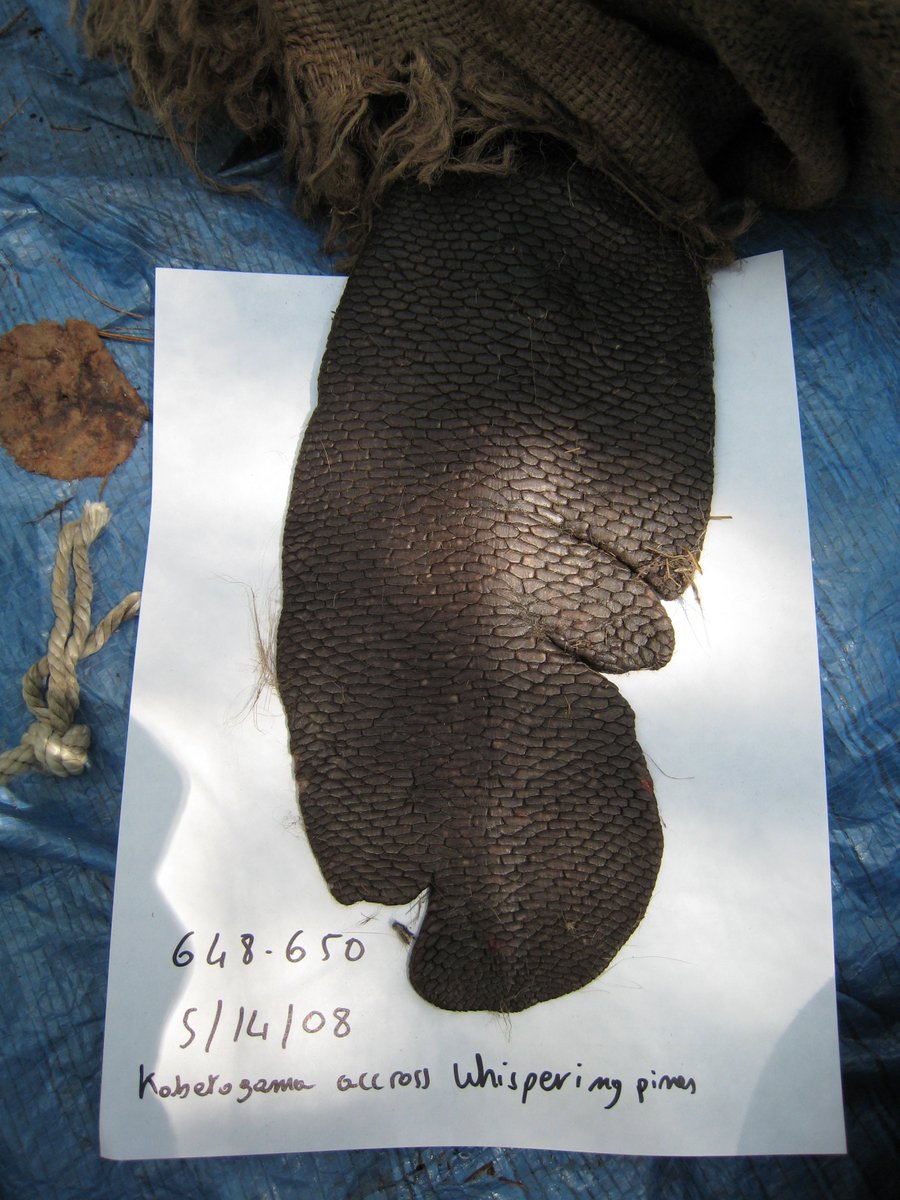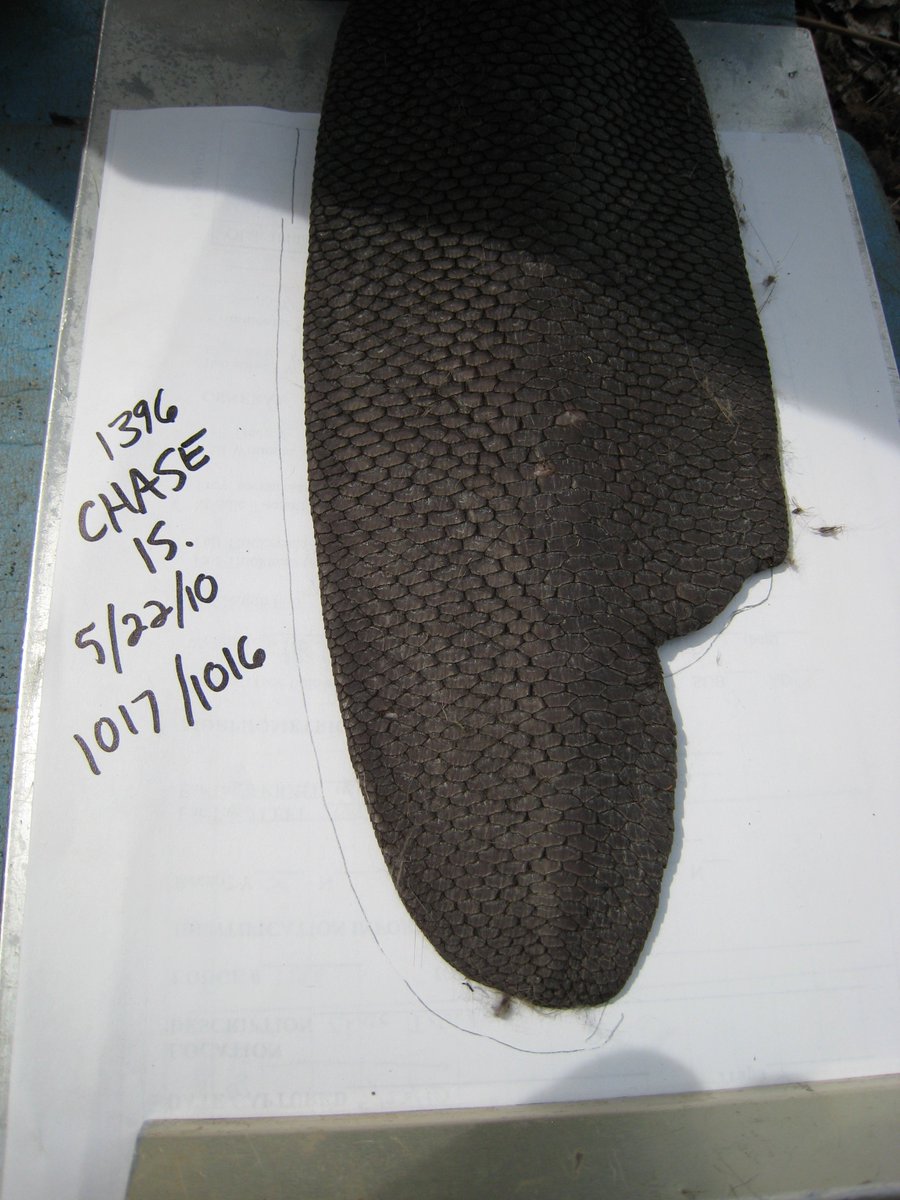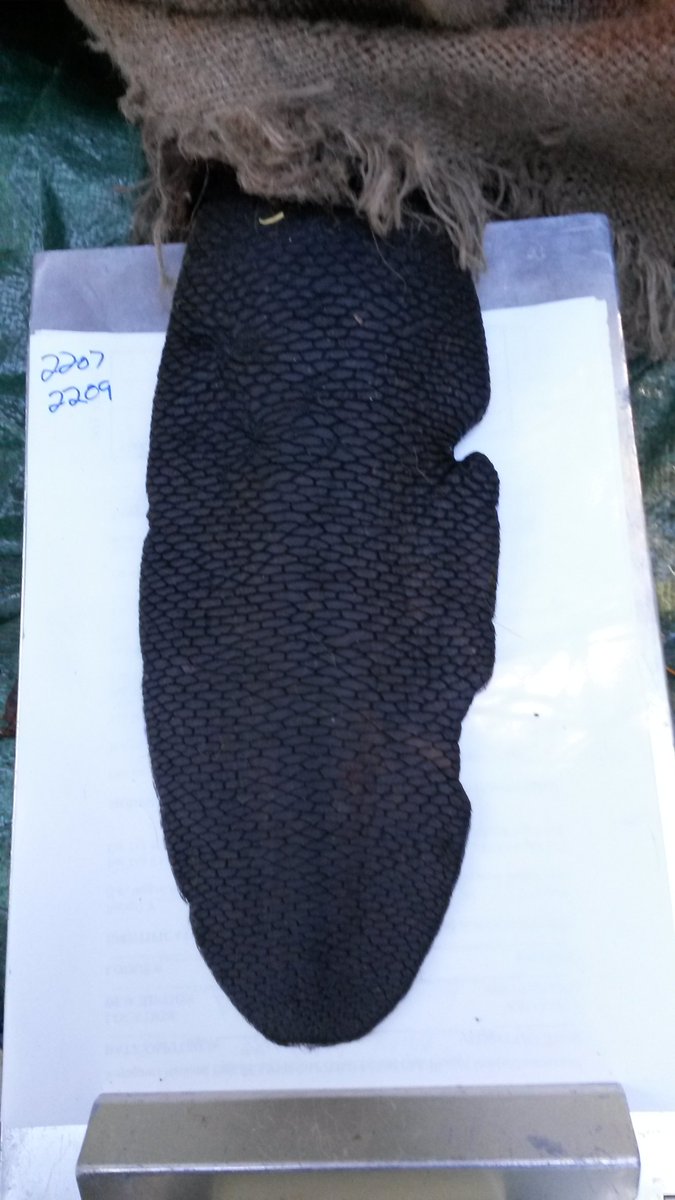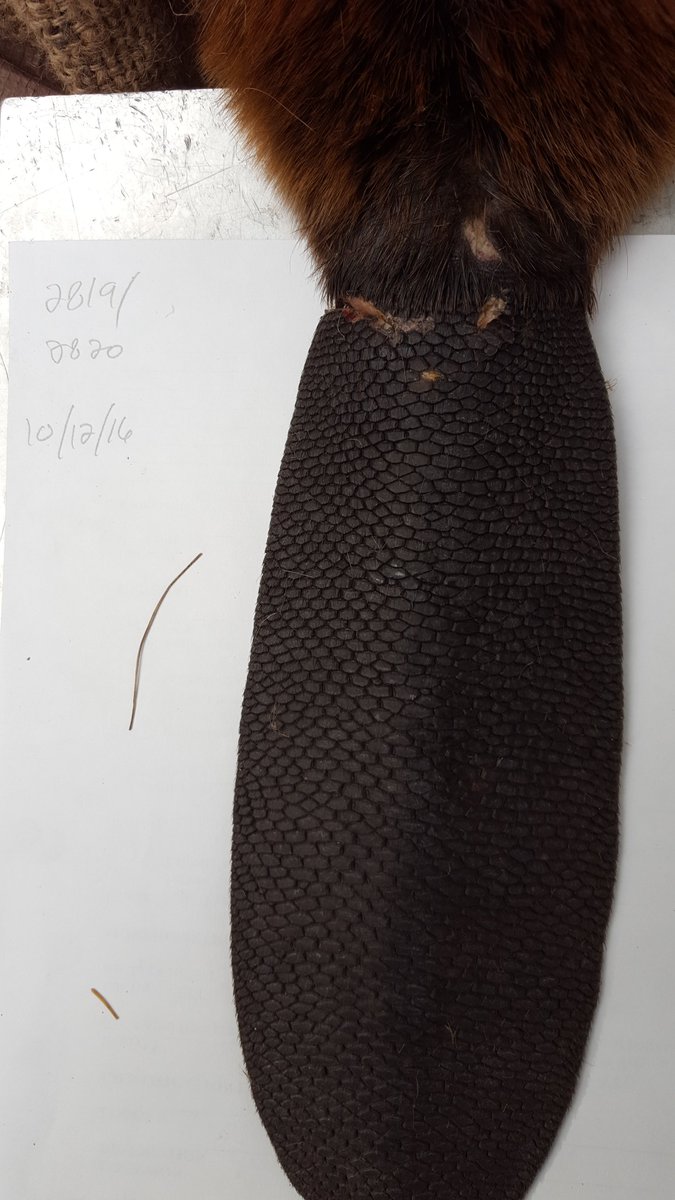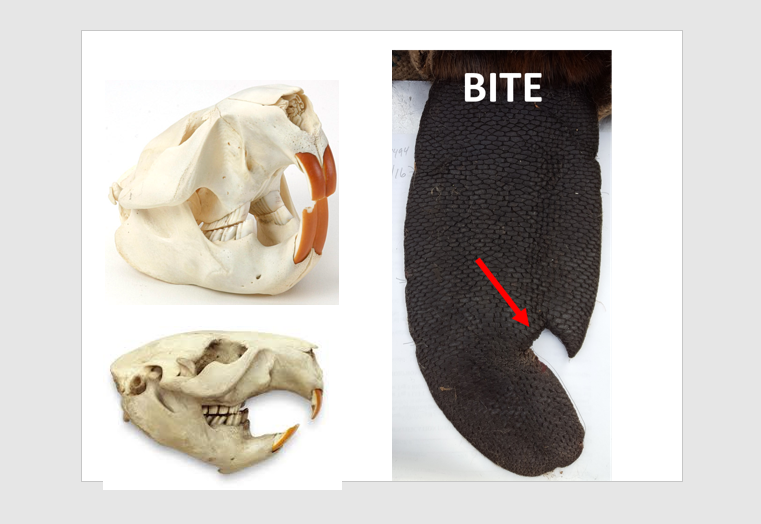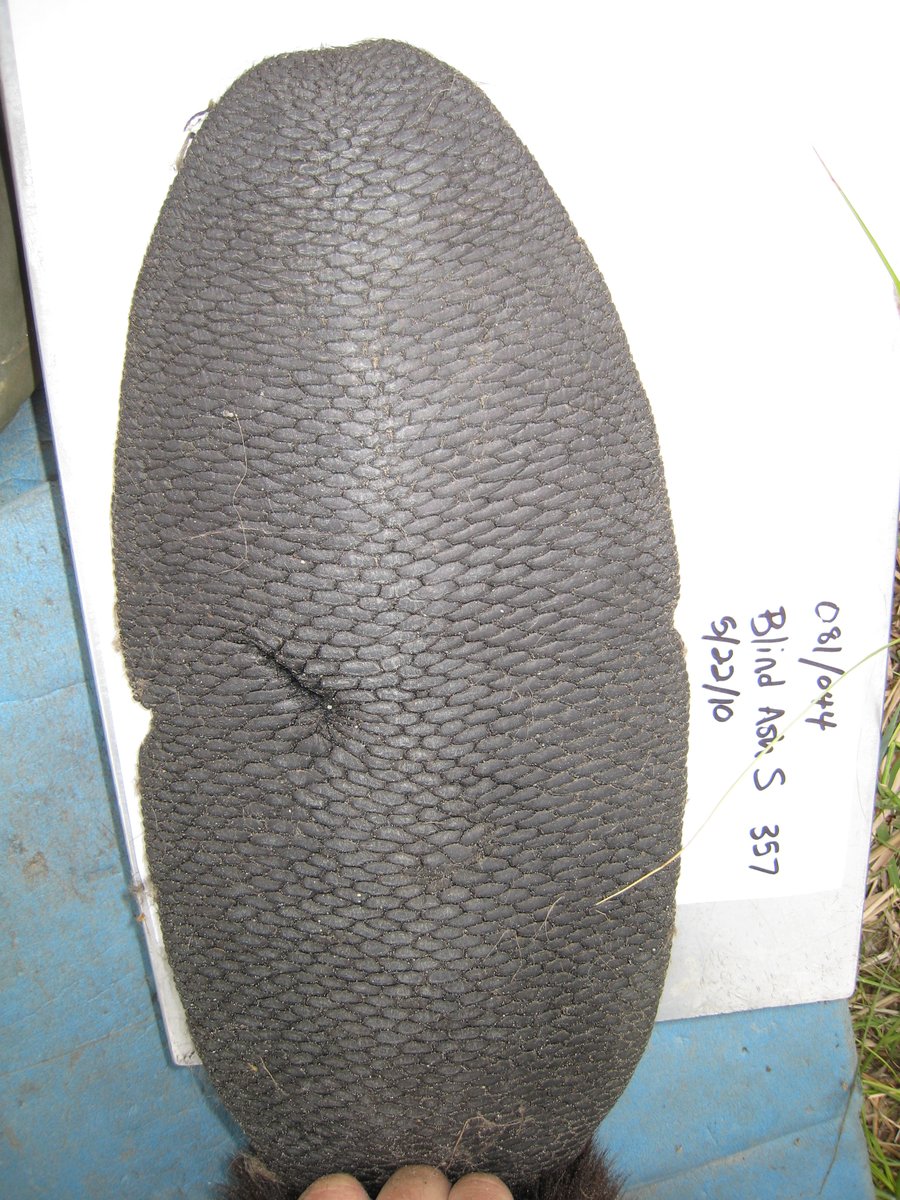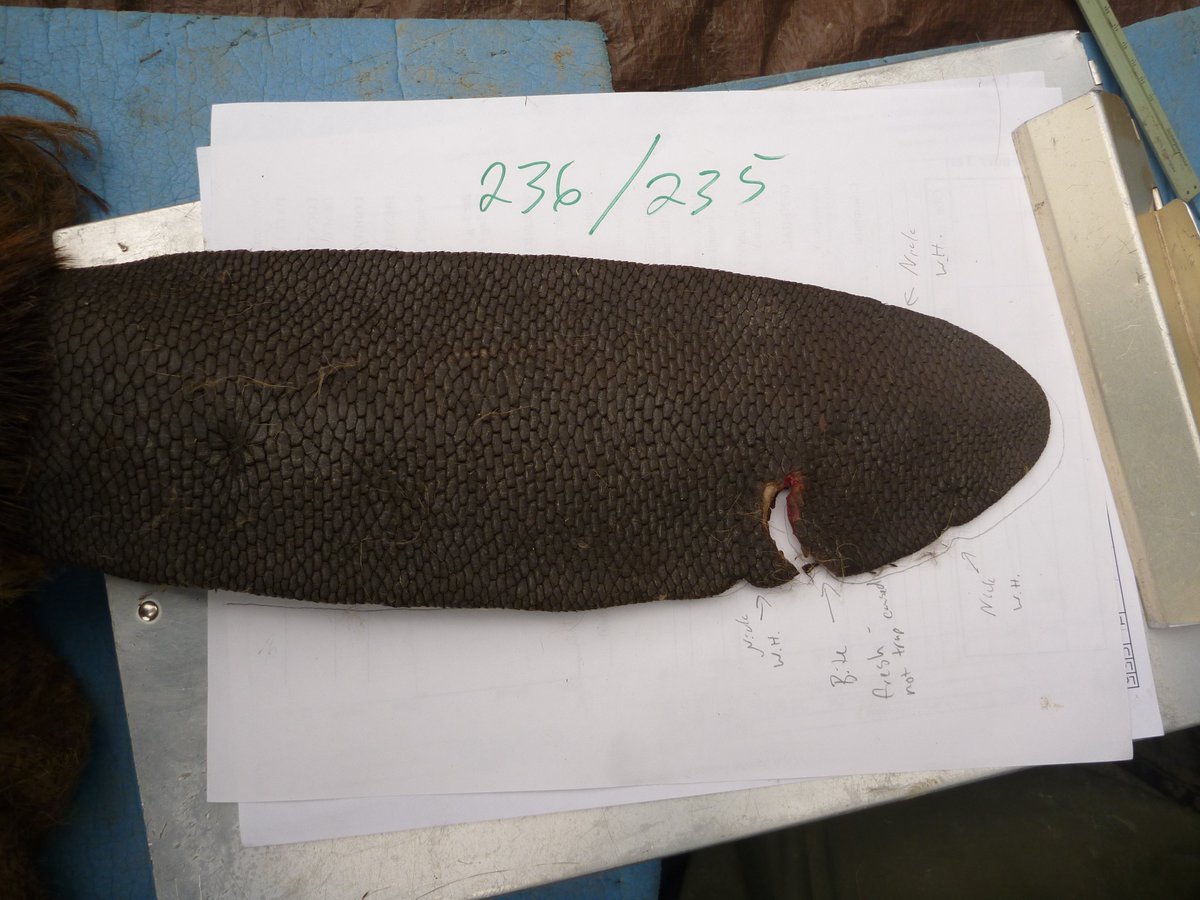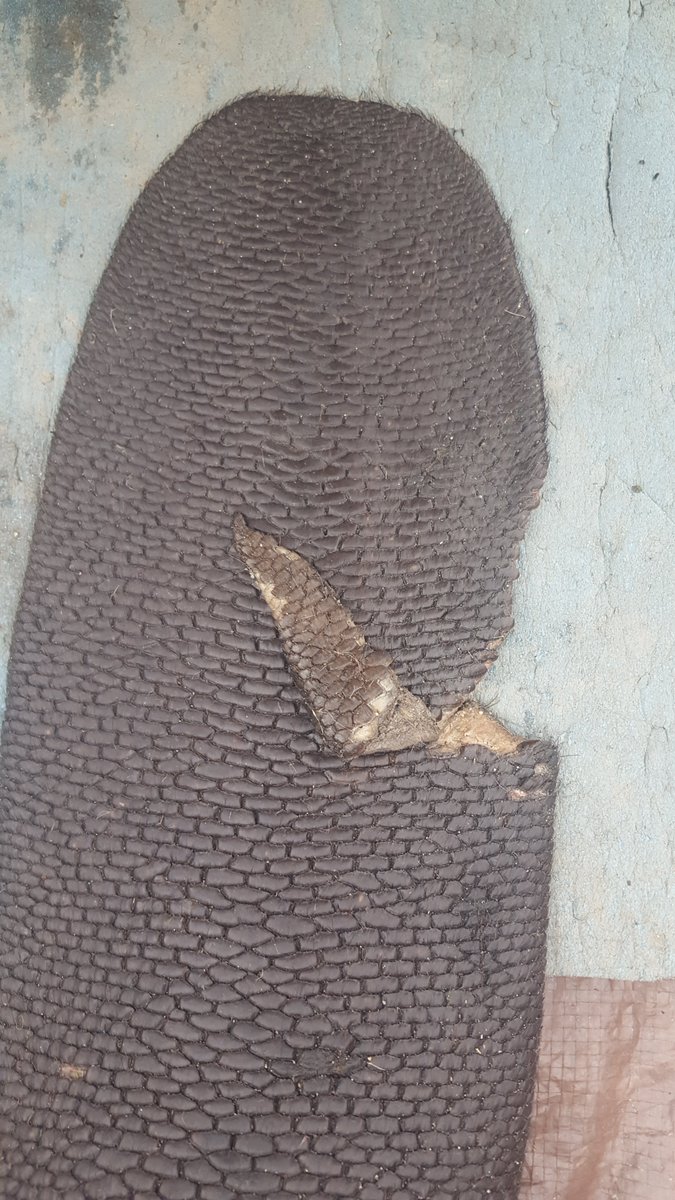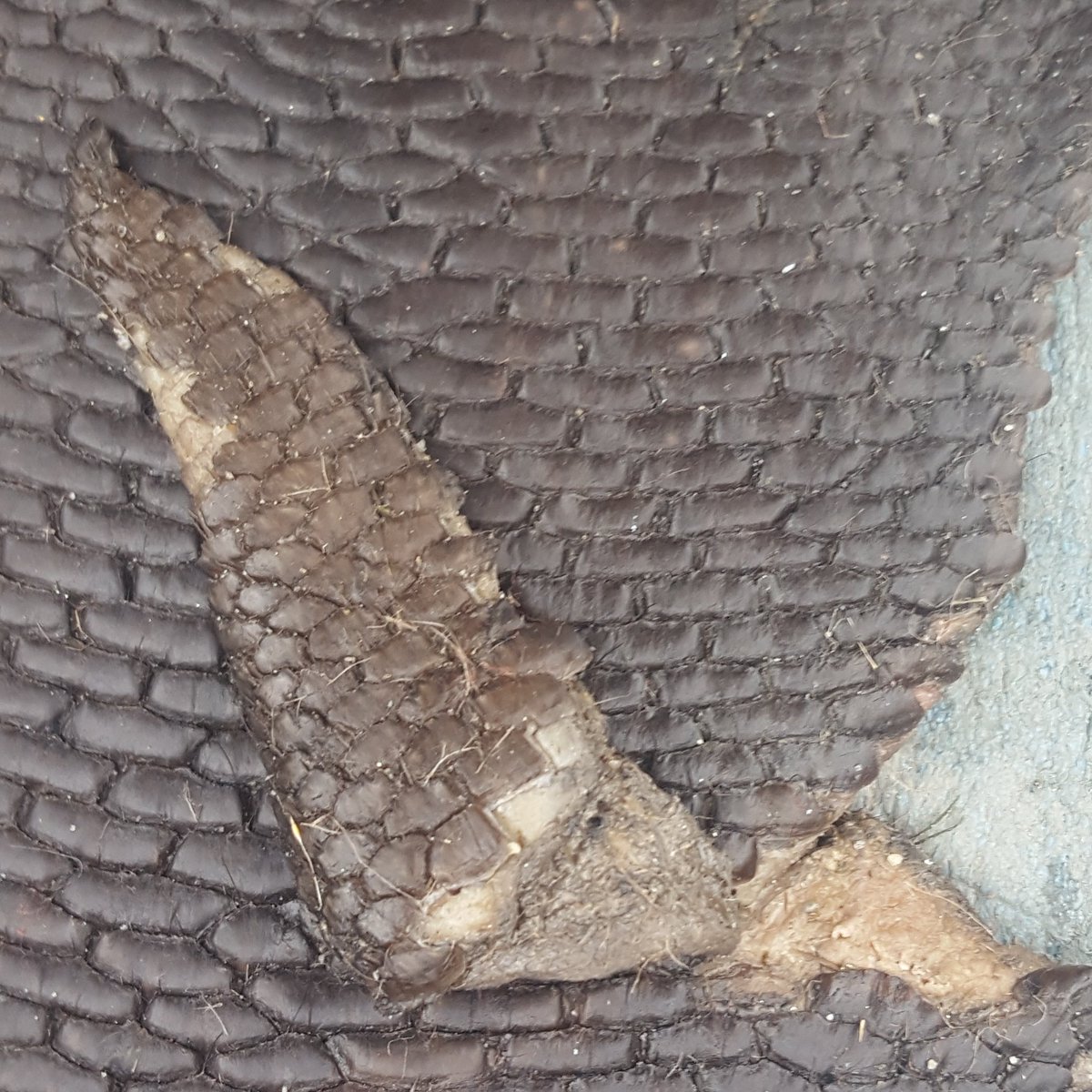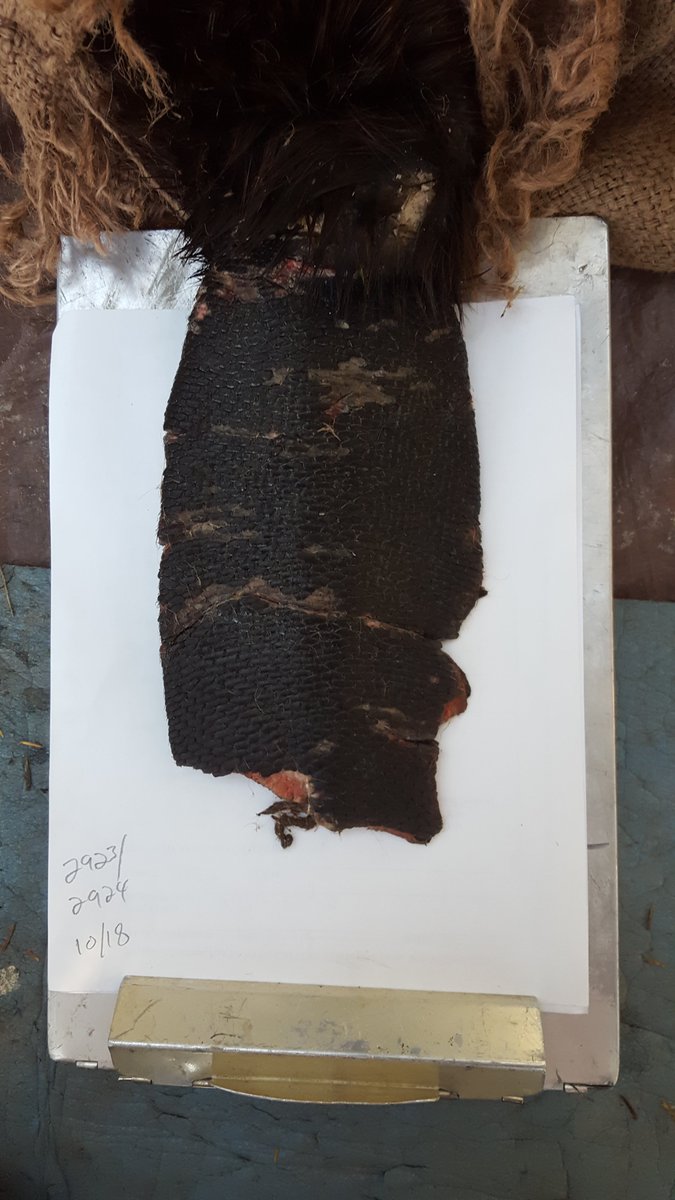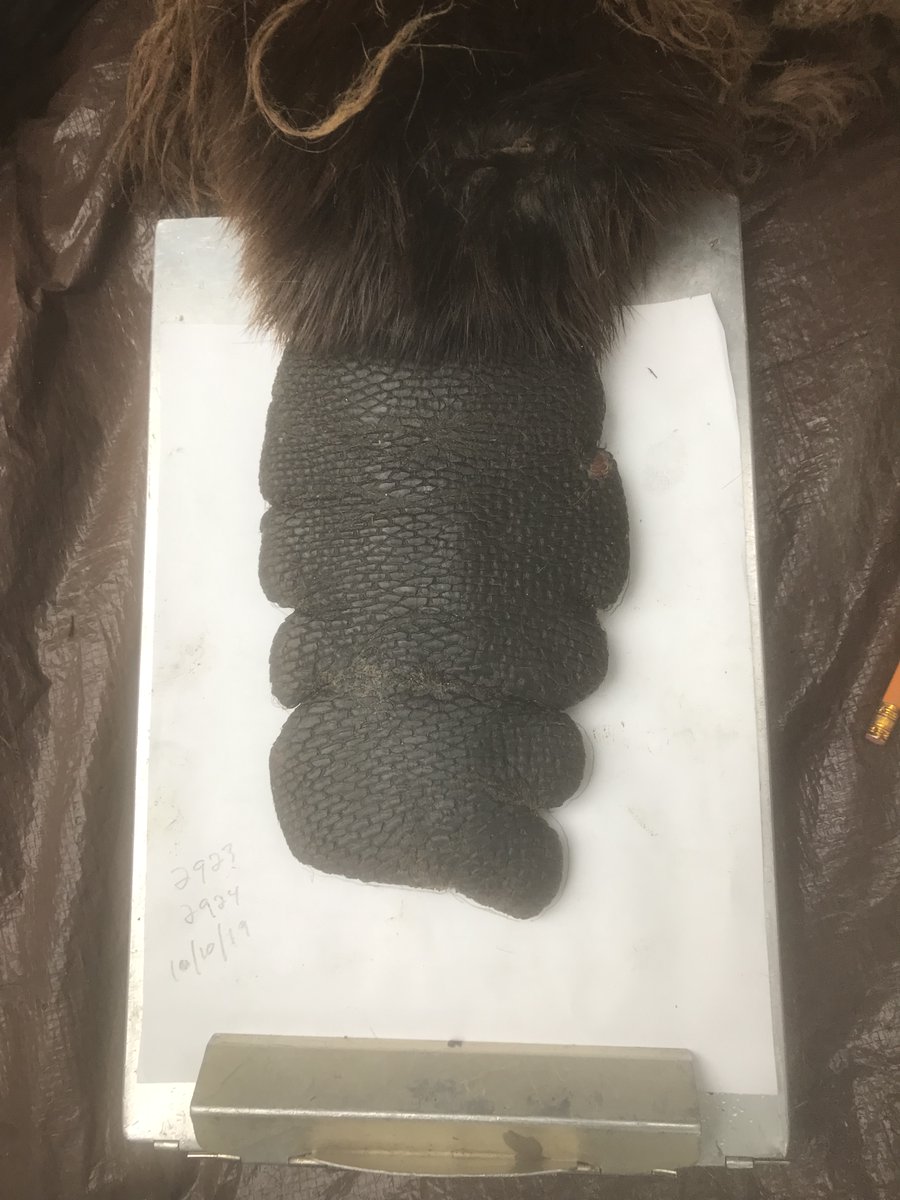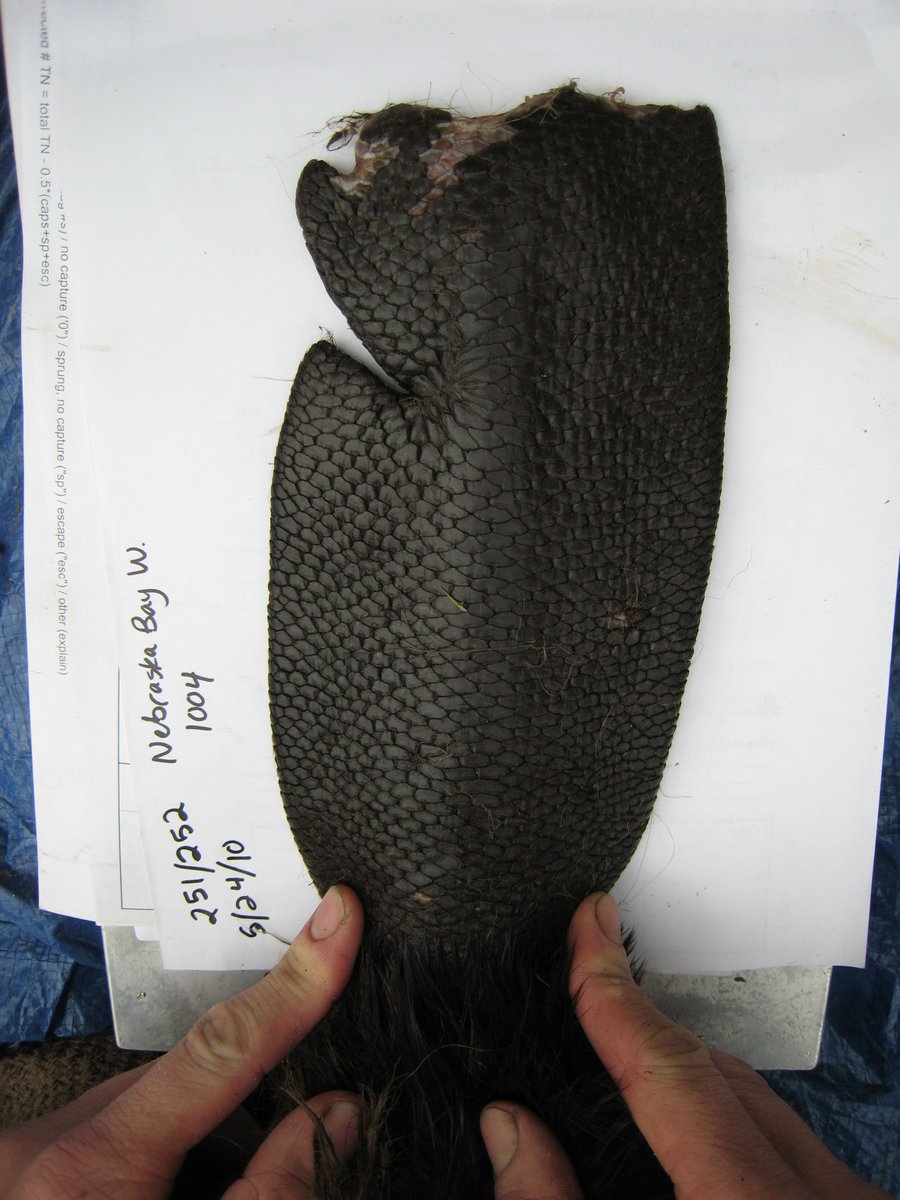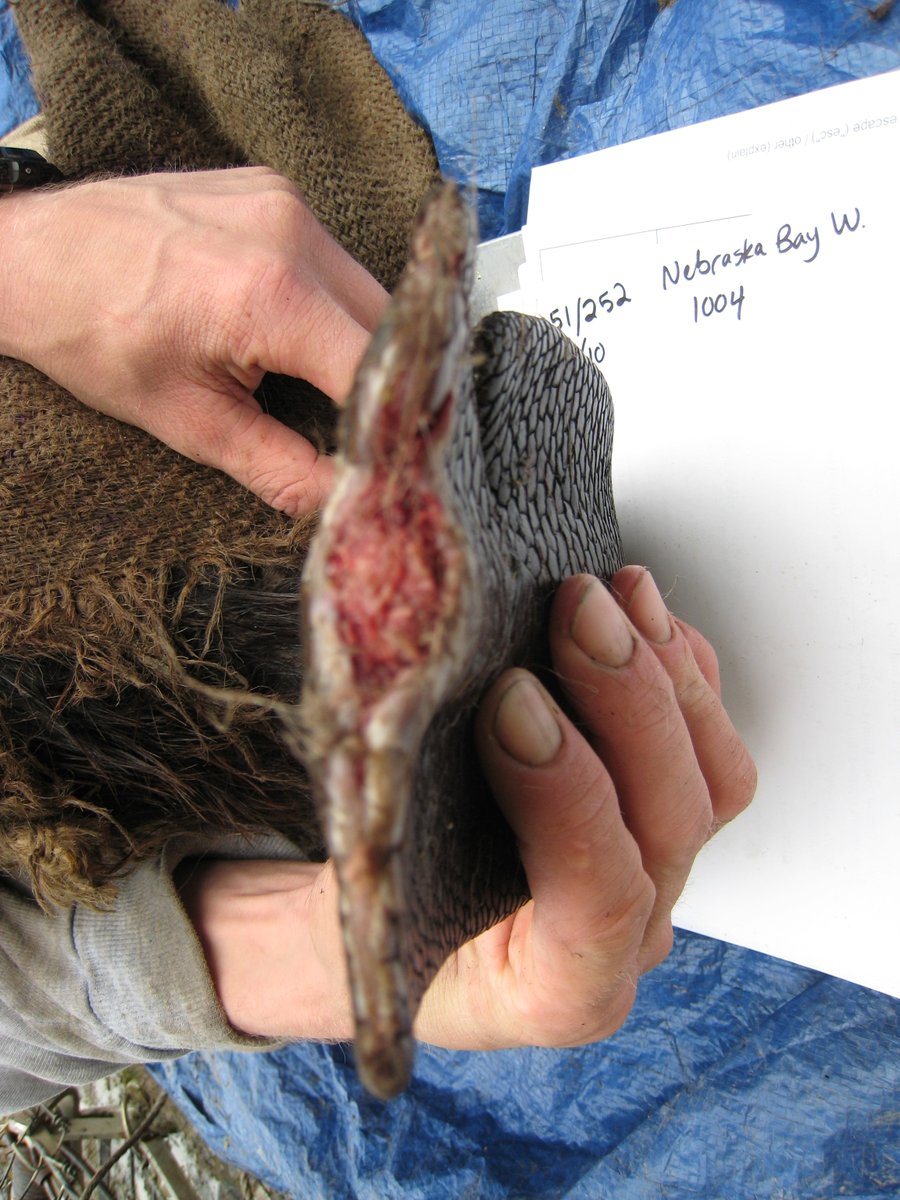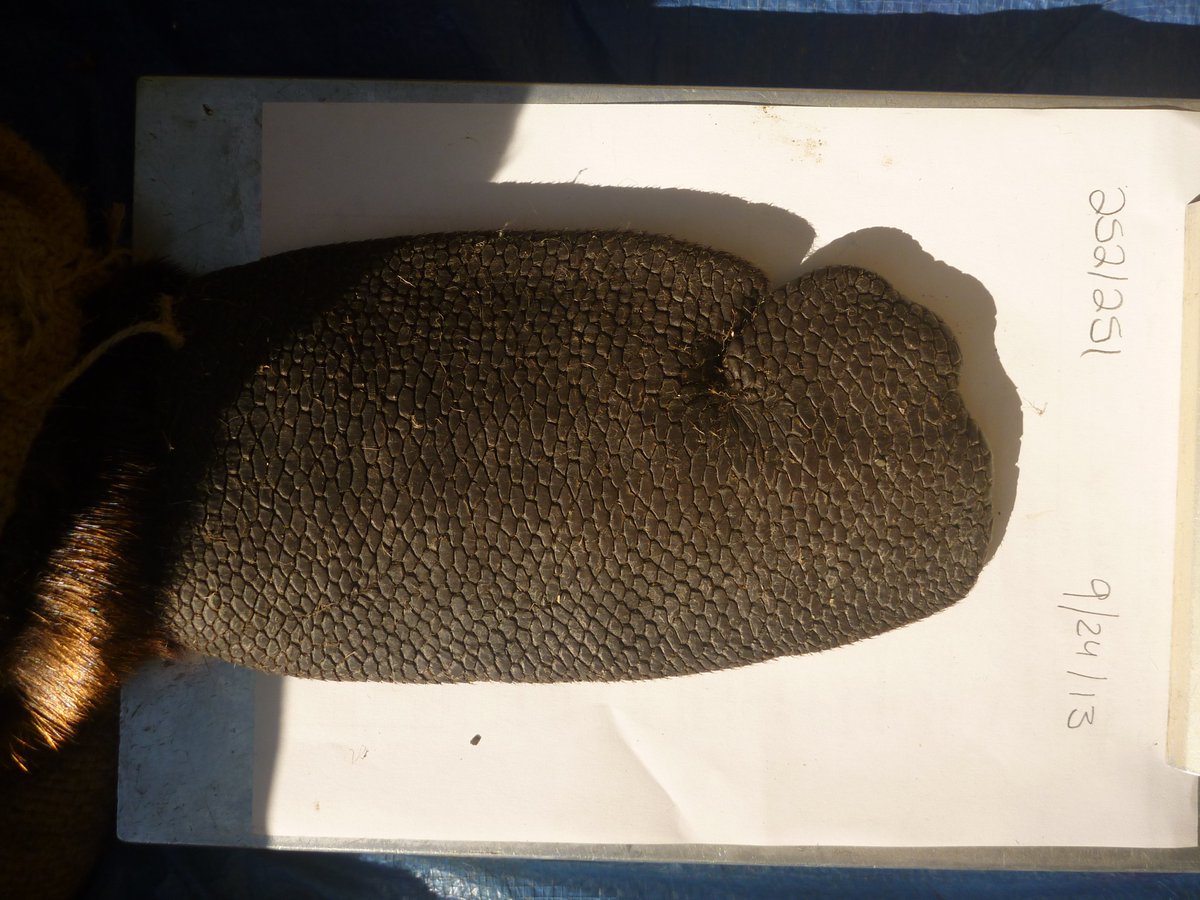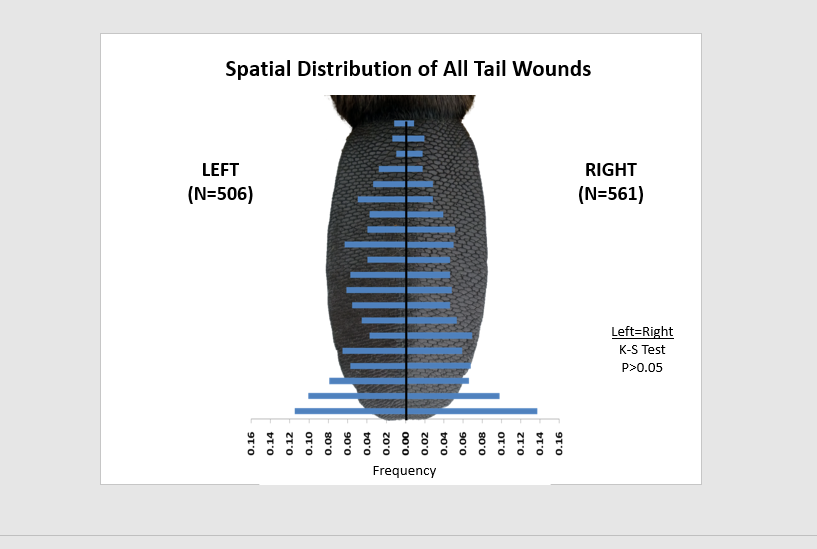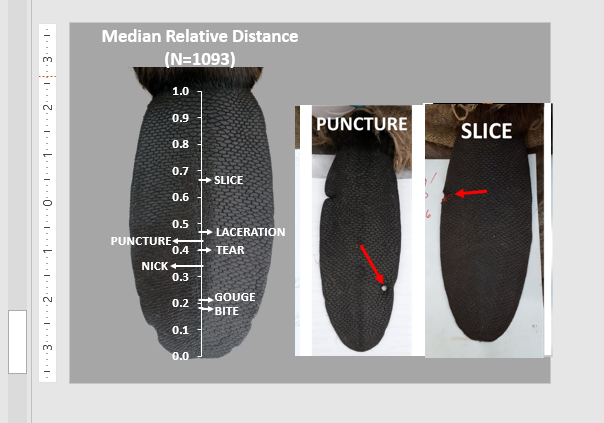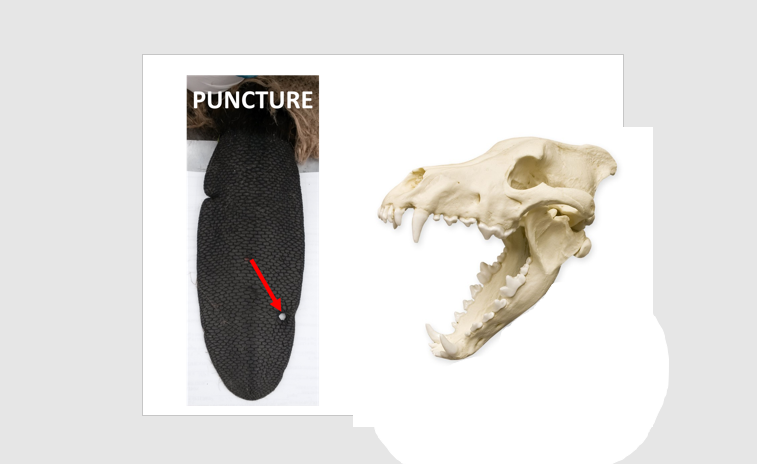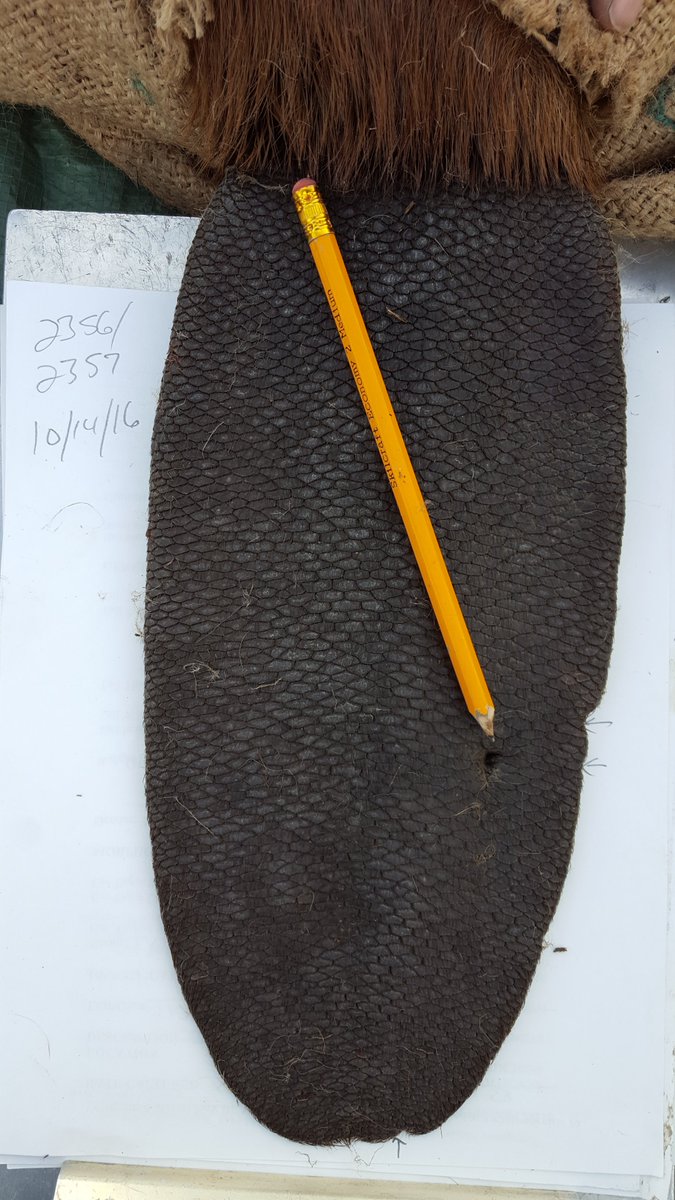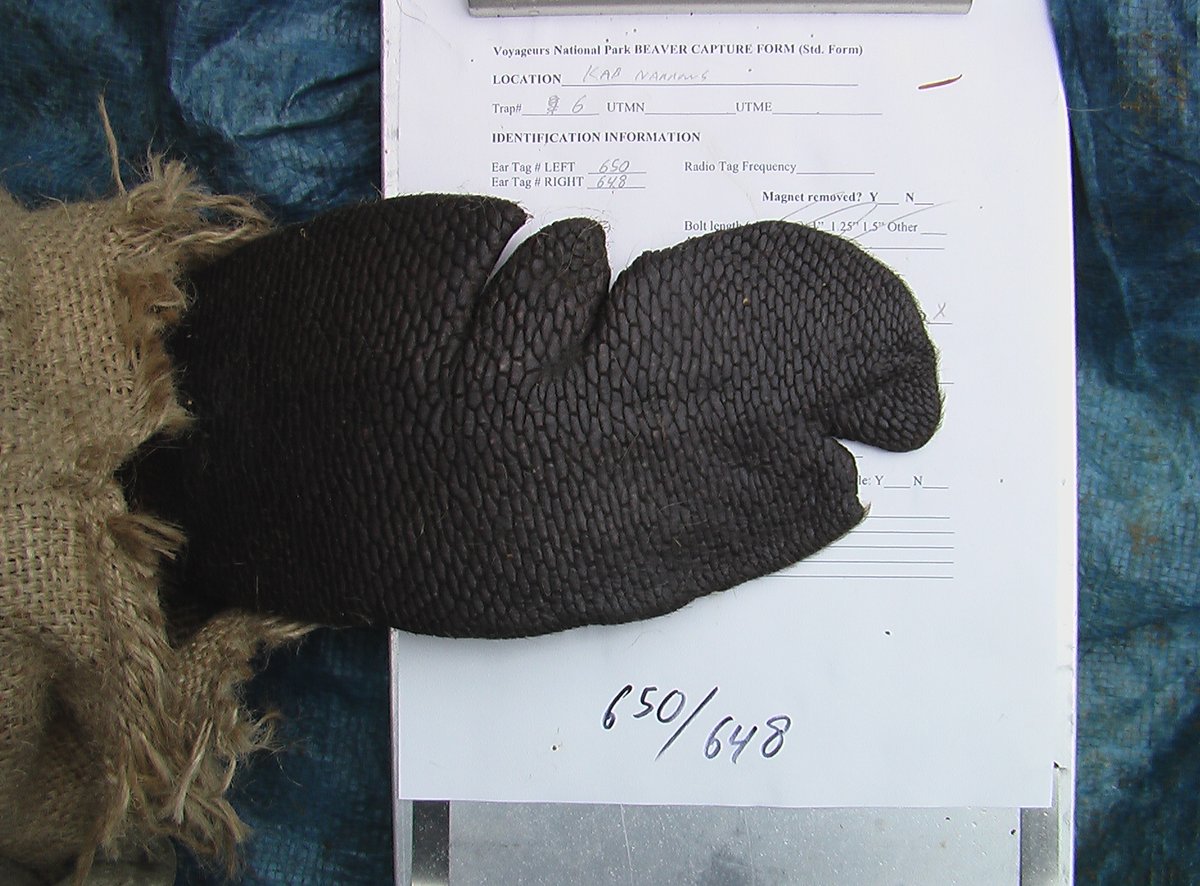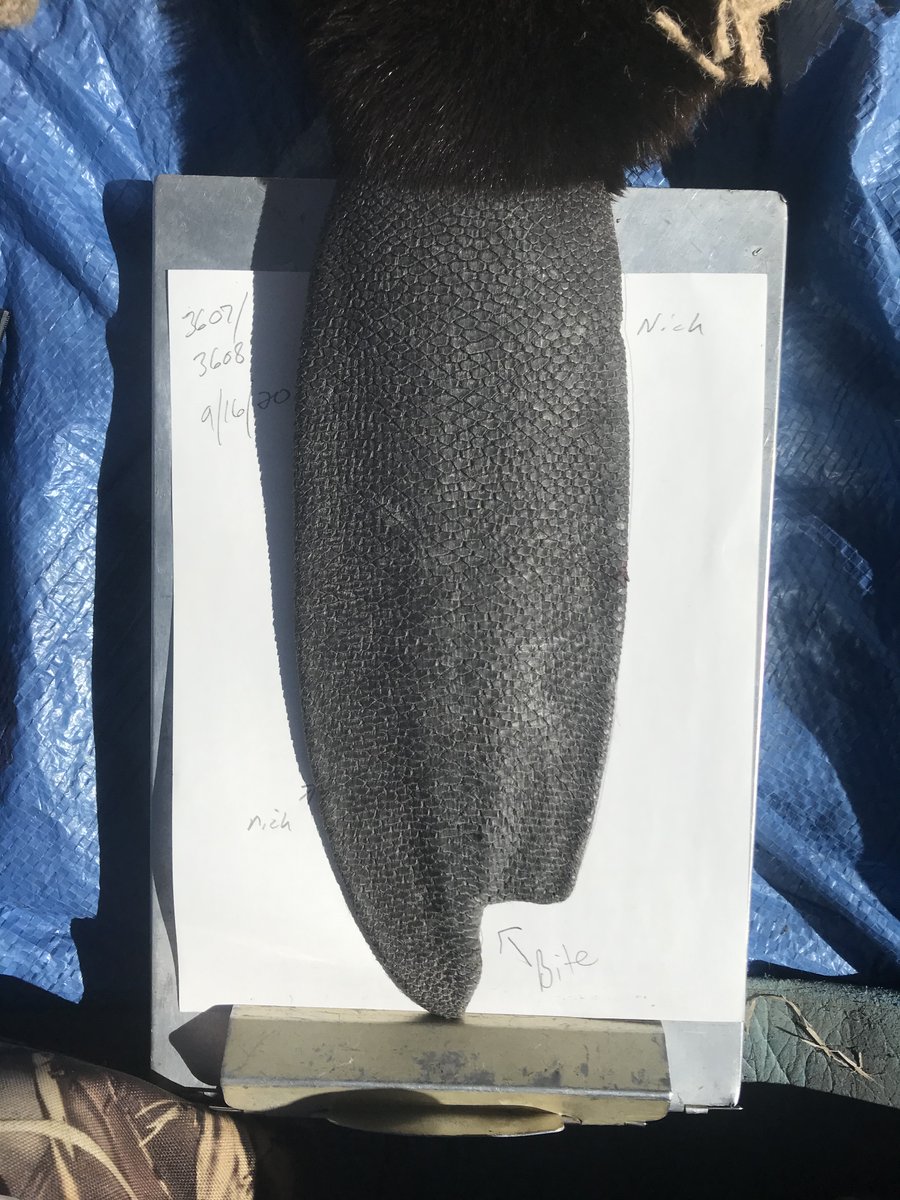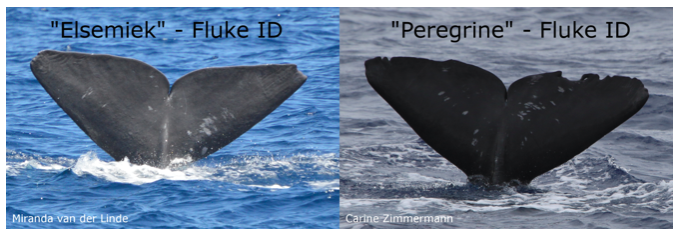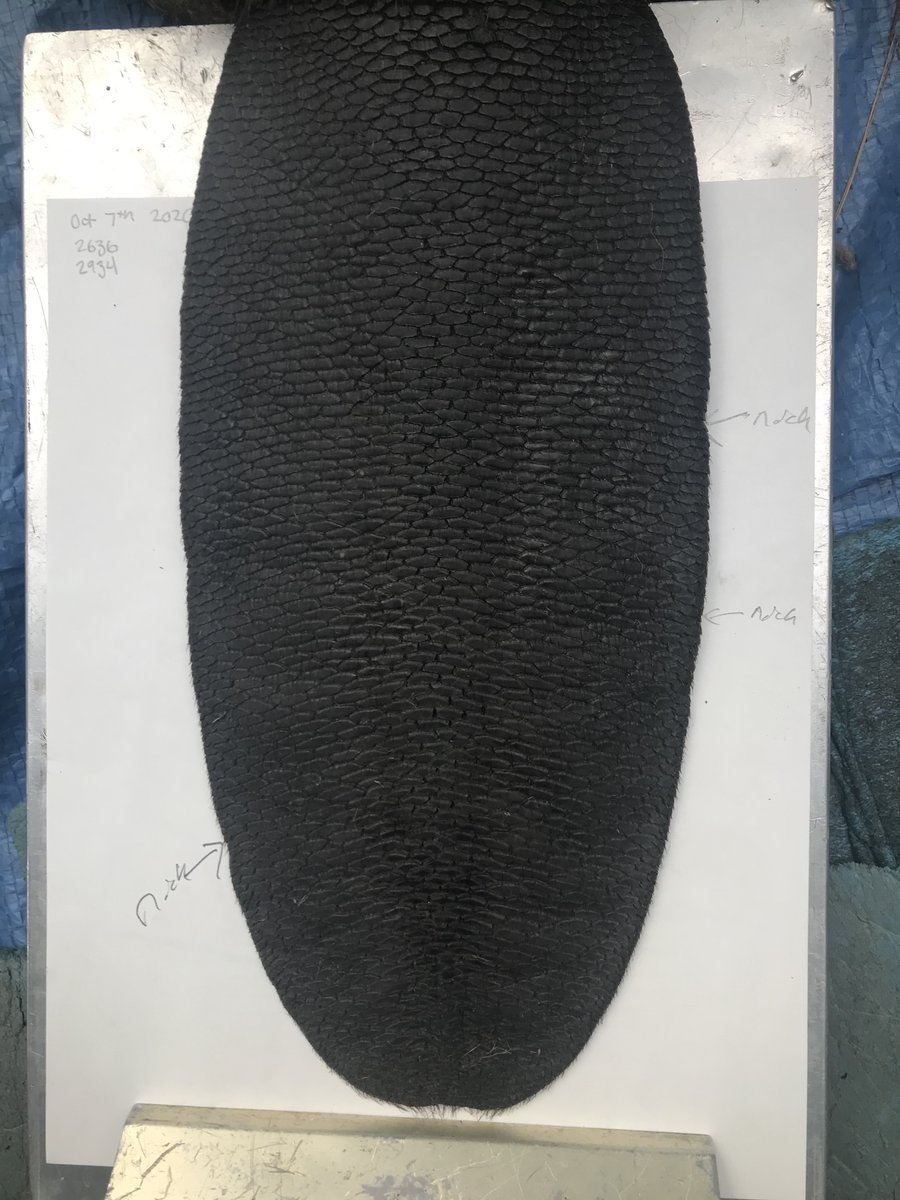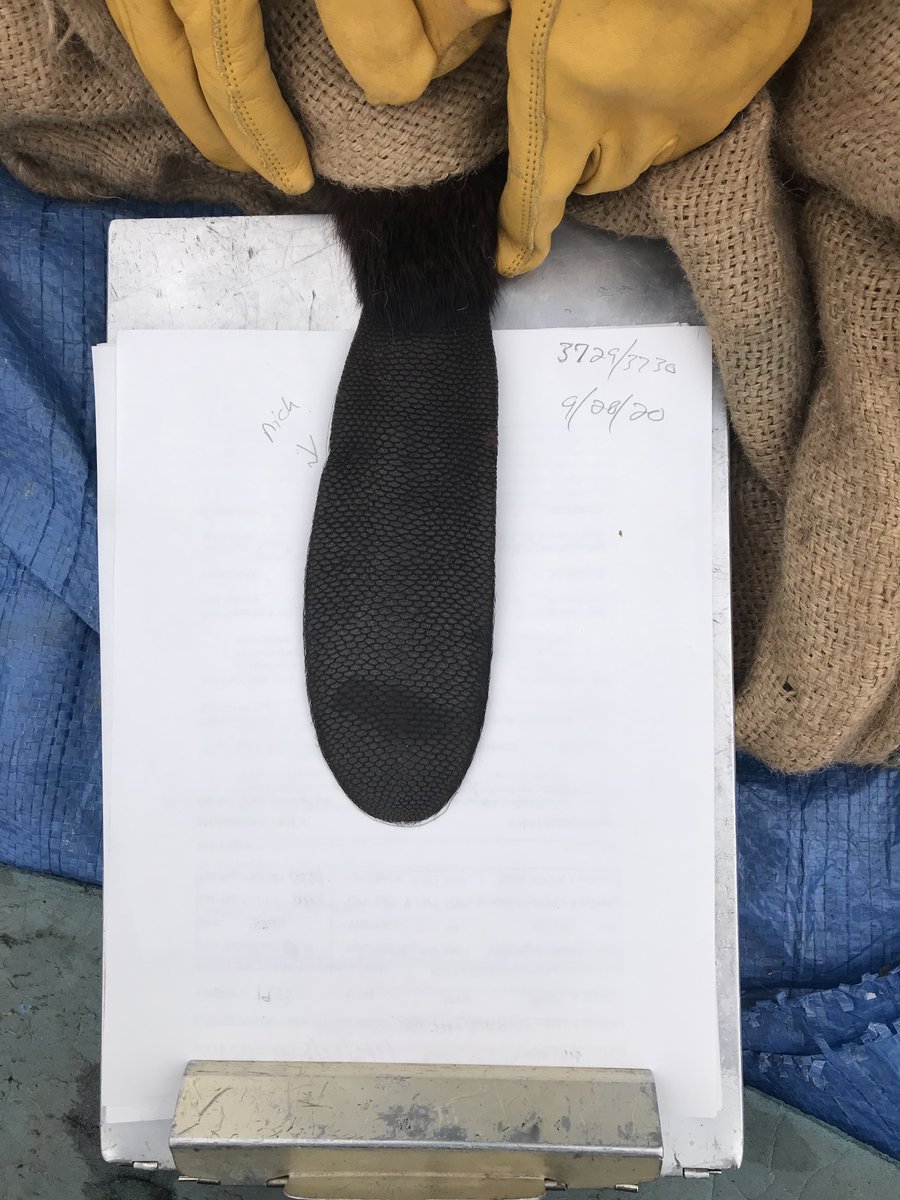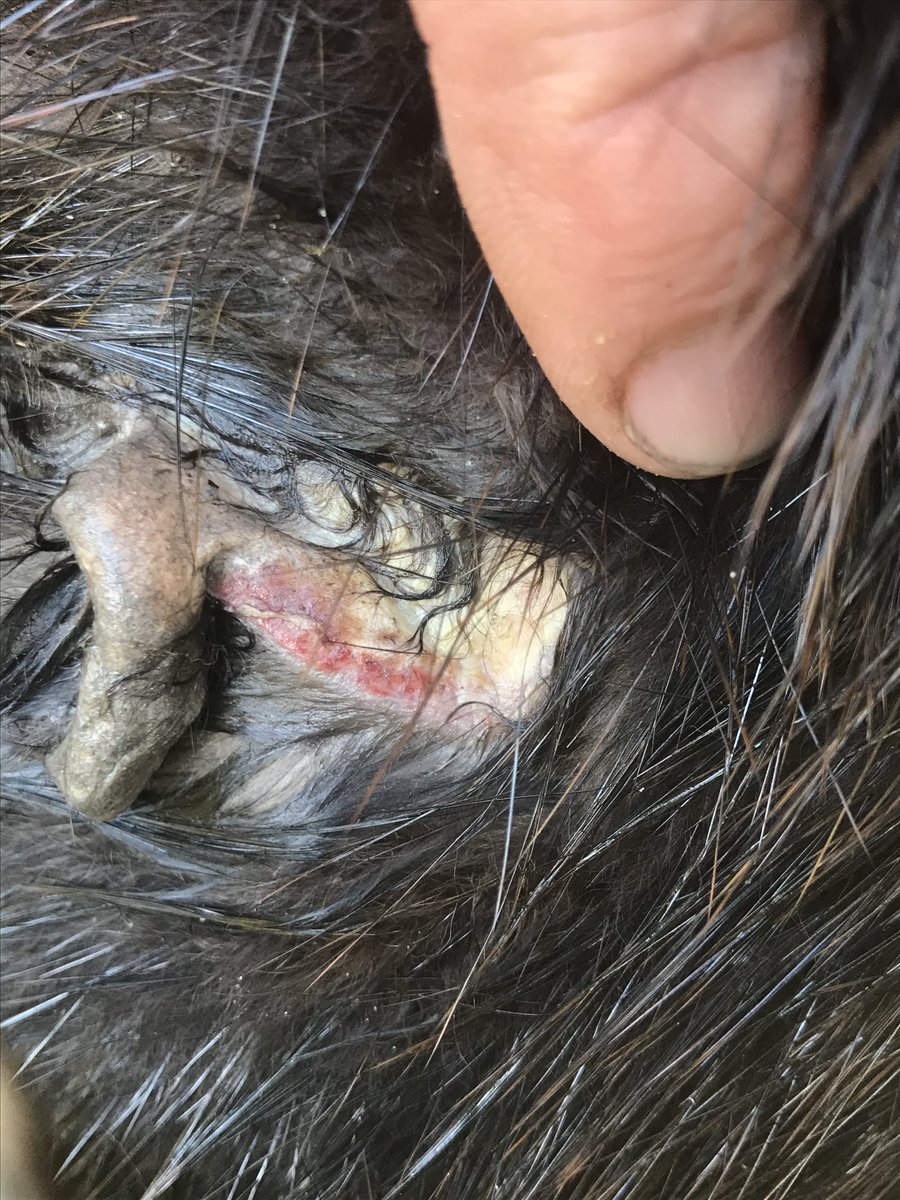By popular demand, here is a more-detailed thread about tail scars/wounds in beavers.
Some beaver tails can be pretty gnarly. But they can be viewed as a scrapbook detailing all the major confrontations a beaver has endured in their lifetime.
Some beaver tails can be pretty gnarly. But they can be viewed as a scrapbook detailing all the major confrontations a beaver has endured in their lifetime.
Most wounds are the result of beavers biting the tails of each other when they fight over territory. Except they don't use their fists (surprise!), they use their teeth!
When beavers fight, they often first engage like Sumo wrestlers, pushing each other around to establish dominance. But rather than simply tossed out the ring by their mawashi, the loser here gets bitten on the rump or tail!
Video is of C. fiber but is similar for C. canadensis.
Video is of C. fiber but is similar for C. canadensis.
The biological version of a chainsaw, beavers have evolved insanely powerful jaws and very sharp, chisel-like teeth to cut through wood like butter. And beaver tails are mostly fat and connective tissue, which is basically butter when compared to wood.
Sometimes we can see where the incisors punctured all the way through the tail but it didn't result in a large chunk removed.
Sometimes the wounds we find are quite fresh. In this case, the torn part of the tail was still hanging on and scar tissue had not yet closed over the wound.
Here's a particularly gruesome one from Oct 2018 in Voyageurs Nat'l Park, on male Beaver 2923 which was super fresh and likely only days old. The bottom 1/3 of tail was completely gone, and the tear seen extending across middle of tail went down all the way to the spine.
BUT, beavers are resilient little fuckers and having heavily scarred/damaged tails does not appear to be a big deal. Beaver 2923 was captured again in 2019 (photo) and 2020, & his tail was totally healed over. He was as equally large and angry as he was in 2018!
Here is another one, female Beaver 251 first captured in May '10, where the bottom of the tail was missing from a very fresh injury. We caught this one again 3.5 yrs later in 2013 and it was completely healed over. You can also see tear on the side had partially scarred over too.
We have looked at things such as whether there is bilateral symmetry in the wounds (there is!; left fig.) and how the different types of wounds are distributed proximal/distal on the tail (right fig.). Pieces tearing off are more common at tip, partial rips more in the center.
We've also documented a number of circular puncture wounds that we are pretty sure are from canines from wolves (and less likely from other carnivores such as bears and coyotes). See the sister project @VoyaWolfProject for more stories about these encounters!
The patterns of scars on the tails can be quite distinct in some cases, especially for larger wounds. And identifying beavers this way, like they do with whales, etc, is possible. But.....
The majority of beaver tails across all age classes (>70% in VNP) are basically wound-free. So using tail scars as a universal ID system has some limits.
Beavers do get plenty of wounds on their rump and back as well from fighting (watch the video from earlier again), but they are much more difficult/impossible to see on a live animal.
Joanne Crawford ( @wildlifementor) had a cool study looking at scars on beaver pelts, where she found similar age and sex-related patterns of wounds in s. Illinois as we do here with tail scars.
@AhlersAdam
@AhlersAdam

 Read on Twitter
Read on Twitter